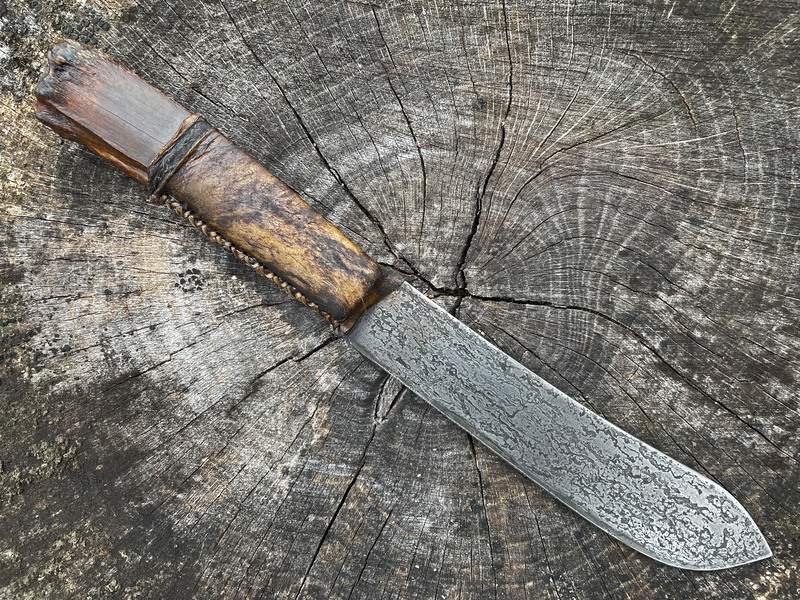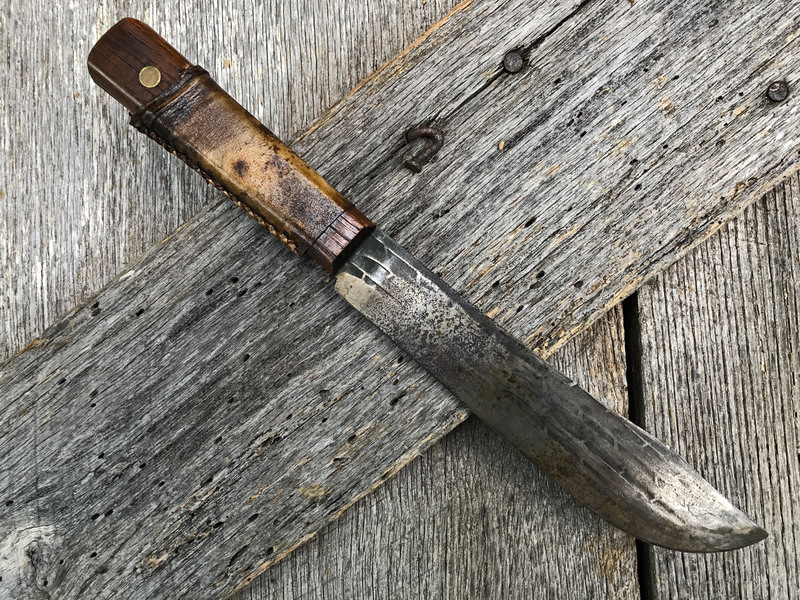I would like to make this knife a little prettier and more PC/HC. I’m thinking sanding and staining the stocks but I don’t know what to do about the blade. Just use it and abuse it until it gains some honest patina?




I would just use it, but not abuse it, and let the patina come honestly. It just sort of sneaks up on you.


Slice a tomato with it and rub the face of the cut tomato all over the blade. Let it sit out overnight and you will see the blade has already darkened. I have an Old Hickory paring knife that I like to use because, being carbon steel, I can get it really sharp. Being carbon steel, I have to be sure to rinse it immediately whenever I cut acidic vegetables of fruits, and I do so. My wife can't seem to understand that one knife needs to be cleaned and occasionally oiled to keep it looking good and I often find it discolored from being left overnight after being used for cutting tomatoes, lemons, or even oranges. Tomatoes will darken pretty quickly. If it get put in the block without being rinsed and wiped first, I might not notice it for a couple of days and then I have to take it out to my belt sander to clean it back up.I would like to make this knife a little prettier and more PC/HC. I’m thinking sanding and staining the stocks but I don’t know what to do about the blade. Just use it and abuse it until it gains some honest patina?
View attachment 160002

That's an interesting knife, @medicine_duck . Enlarging the photo, I see EKCO FORGE stamped on the blade. I understand you did the coloration on the blade, and it looks really good, but is that the original blade shape, or did you modify it? I don't think I've seen one quite like it before. Looks like about a nine-inch blade, maybe?Cold blue and rub back with steel wool. Then use it as a kitchen knife.
View attachment 160100







As far as I know it is original. I got it at a gun show and cleaned it up, stained the handle and blued the blade. The blade is 7.75That's an interesting knife, @medicine_duck . Enlarging the photo, I see EKCO FORGE stamped on the blade. I understand you did the coloration on the blade, and it looks really good, but is that the original blade shape, or did you modify it? I don't think I've seen one quite like it before. Looks like about a nine-inch blade, maybe?
Best regards,
Notchy Bob


Both very nice.Here's a Green River butcher that I aged using John Cohea's method with ferric chloride and bleach. I used deer bone for the handle and added a little rawhide wrap.

This one I found at the local flea market already "aged". I stained and refinished the handle and added a rawhide wrap.

Enter your email address to join: